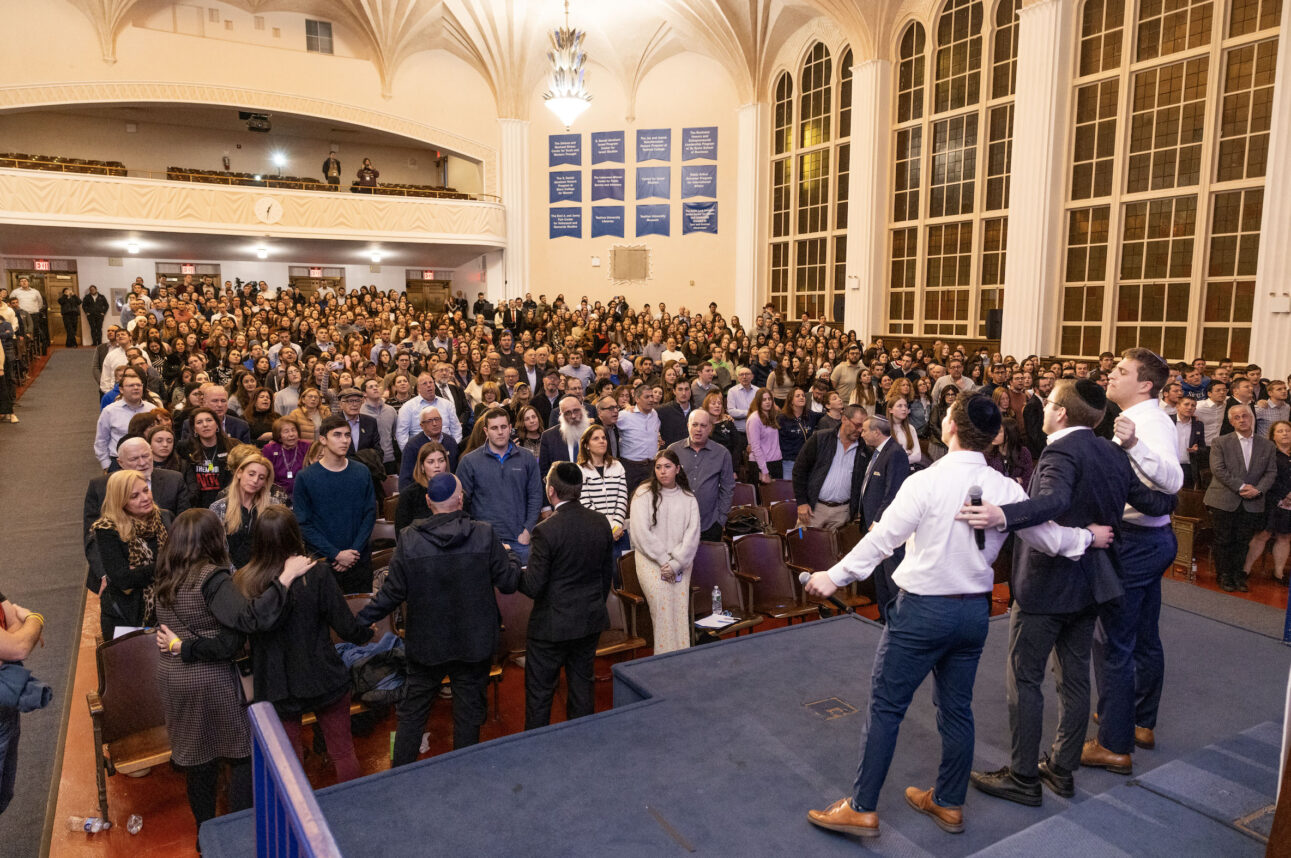Rat Jaw.
Testicle Spectacle.
Son of a Bitch Ditch.
The Bad Thing.
These are some of the obstacles that participants in the little-known Barkley Marathons can expect to encounter. Hunger Games, eat your heart out.
With its legacy and rich history virtually untapped, discovering the tradition of the Barkley Marathons was like hitting the jackpot for first-time filmmakers Annika Iltis and Tim Kane. So after they found a story in Believer Magazine about the 2011 race, they knew they had to move quickly to make the 2012. Seven weeks later, Iltis and Kane were on their way to Frozen Head State Park and home of the Barkley, camera crew in tow.
Iltis, who grew up in Chicago and was bat mitzvahed at a Conservative synagogue, has lived in L.A. since 2001 and had been working with Kane as a camera assistant in film, TV and commercials for many years. Heading their own project hadn’t been on the immediate to-do list, but after wrapping on the fifth season of “Mad Men,” an opportunity presented itself that was too good to pass up. The result is their directorial debut, “The Barkley Marathons: The Race That Eats its Young.”
Once a year, distance runners from around the world descend on a small town in eastern Tennessee to race through miles of vast, unmarked terrain, in temperatures below freezing, guided only by a compass and directions as ambiguous as “Go left at the tree with three stumps.” Dehydrated and prone to hallucination, their heels are more blister than sole after climbing thousands of feet uphill and fending off forest briars that threaten to flay their skin clear off.
The real-world story behind the founding of the Barkley could be its own movie. The year was 1977, and James Earl Ray, the man serving a 99-year sentence for killing Martin Luther King Jr., had escaped from Tennessee’s Brushy Mountain State Prison. He and six inmates pulled off an elaborate plan involving a staged fight as a diversion, a makeshift ladder concocted from plumbing supplies … and a run for it.
Ray didn’t last long. Authorities found him 54 hours later about eight miles away. His cohorts didn’t fare any better.
Ray’s paltry escape performance caught the attention of Gary Cantrell, who goes by the pseudonym Lazarus Lake. Why the short distance? If he’d had nearly 60 hours at his disposal, Lake thought to himself, he could have gone at least 100 miles. Thus the Barkley Marathons was born, with the inaugural race in 1986. It’s considered by many to be the hardest race in the world — when Iltis and Kane started filming in 2012, only 10 people had ever finished.
Participants have 60 hours to complete five loops. The first three comprise the “Fun Run” — the conquest of a lifetime by any standard. After five loops, the distance in elevation is equivalent to hiking up and down Mount Everest. Twice.
Finishing one loop brings the runners back to home base, where they can dress their bloody legs, bandage their abscessed feet, and restock on supplies before setting out again.
But returning to camp after each loop also poses a psychological dilemma, one of the Barkley’s many. It demands equal parts mental and physical strength, and deciding to subject oneself to the mountainous elements five separate times is often as difficult as the elements themselves.
The loops are 20 miles each, although runners swear they’re closer to 26 (thus “the marathons”). One of the locals sums it up in the film perfectly when he says, “The most correct answer is that it’s 20 miles, and it’s 26 miles.” Keeping the distance ambiguous plays into the Barkley’s mental trickery, and is another curious rule of engagement imparted on the runners by the race’s equally curious co-founder, all in the spirit of competition.
“You can’t accomplish anything without the possibility of failure,” Lake says in the film. “You like to see people have the opportunity to figure out something about themselves.”
For the hundreds who apply each year, Lake assigns an essay on why they should be one of the 35 chosen to join the ranks of that year’s Barkley Marathoners. The entry fee is $1.60. With one 60-mile race and one 100-mile race — that comes to a penny a mile. Lake could charge 300 times that, but for him, money provides little incentive. Should the race fall during a time he’s low on socks, he’ll charge a pair of socks. The satisfaction he derives from the marathons is rooted in painful self-improvement and testing the limits of the human condition.
“We wanted Laz and the race to be a main character,” Iltis said. “It’s really a special thing that came together. He’s an amazing person … we never wanted to turn off the cameras.”
With names like Lazarus Lake and Raw Dog — Lake’s business partner — the founders of the race reflect the grizzly nature of the beast they created. But in addition to Lake’s infectiously dark humor, what becomes clear as the film goes on is how, for all his twisted interpretations of what healthy competition looks like, he has a prophetic method to his madness: “Most people, by the time they’re finished with the ordeal, really are not concerned about how other people evaluate their performance,” he says. “They make their own judgments about success and failure.”
Despite Lake liking a low profile, Iltis said he was on board with the documentary from the beginning. She and Kane had a mutual understanding with and sincere respect for Lake and his community, which comes through in the film’s sophistication. As far as needing to guide a narrative structure for essentially the first time, they didn’t fall into traps so common with first-time filmmakers. They don’t drum up drama where there needn’t be and their presence in the film is nearly undetectable. They let the subject and its characters speak for themselves. “This was never going to be an exposé,” Iltis said. “The most important part was to maintain respect, to be inspiring without getting rid of the secrecy.”
Iltis said her faith played a big part in connecting her to the Barkley Marathons, its community and its tradition. “Judaism was a huge part of growing up, and helped lay the foundation for that community aspect that really comes through in the Barkley,” she said.
“People go out there to find out more about themselves, and that becomes something beyond a physical thing.”
“The Barkley Marathons: The Race That Eats its Young” recently concluded its theatrical run at the Downtown Independent in Los Angeles, and is now available on VOD and various platforms.





















 More news and opinions than at a Shabbat dinner, right in your inbox.
More news and opinions than at a Shabbat dinner, right in your inbox.